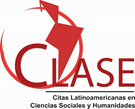Inteligencia artificial y propiedad intelectual
Resumen
La inteligencia artificial está revolucionando los preceptos de los derechos de propiedad, en la actualidad existen algoritmos de inteligencia artificial que de forma “autónoma” son capaces de crear lo que podrían considerarse obras del espíritu si fuesen realizadas por seres humanos. Sin embargo, bajo las concepciones vigentes no podría atribuirse titularidad de derechos de autor sobre productos realizados por “no-humanos”. Es más, hay barreras para su inclusión, con lo que se está generando un vacío legal que debe ser cubierto urgentemente y de manera armonizada. Por ello, el objetivo del presente trabajo es determinar, a partir del análisis, si el mandato constitucional de proteger la propiedad intelectual implica que dicha titularidad debe reconocerse o, en su defecto, que deben crearse nuevos derechos intelectuales para los productos de la inteligencia artificial. Los resultados que se presentan fueron generados mediante la aplicación del Método General de Solución de Problemas basado en un análisis de causa por el Diagramas de Causa y Efecto.
Palabras clave:
Inteligencia artificial; propiedad intelectual, algoritmos de inteligencia artificial.
ABSTRACT
Artificial intelligence is revolutionizing the precepts of property rights, there are now artificial intelligence algorithms that "autonomously" are capable of creating what could be considered works of the spirit if they were made by human beings. However, under current conceptions, copyright ownership could not be attributed to products made by "non-humans". Moreover, there are barriers to their inclusion, thus creating a legal vacuum that must be filled urgently and in a harmonized manner. Therefore, the objective of this paper is to determine, based on the analysis, whether the constitutional mandate to protect intellectual property implies that such ownership should be recognized or, alternatively, that new intellectual rights should be created for artificial intelligence products. The results presented were generated through the application of the General Problem-Solving Method based on a causal analysis by Cause-and-Effect Diagrams.Keywords:
Artificial intelligence; intellectual property, artificial intelligence algorithms.Descargas
Publicado
Cómo citar
Número
Sección
Licencia
La editorial "Universo Sur", de la Universidad de Cienfuegos, publica el contenido de la Revista "Universidad y Sociedad" bajo una Licencia Creative Commons Atribución-NoComercial-SinDerivar 4.0 Internacional.
© Podrá reproducirse, de forma parcial o total, el contenido de esta publicación, siempre que se haga de forma literal y se mencione la fuente.









